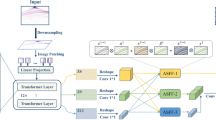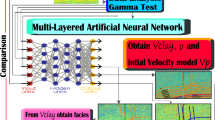Abstract
The success of full-waveform inversion (FWI) modeling depends on many factors, i.e., initial model, source wavelet, and low-content. Low-frequency seismic data is extremely important for FWI as it allows for accurate sub-surface imaging and increasing the resolution of sub-surface features, while also providing information on overall sub-surface geological features. However, the lack of low-frequency data can lead to cycle-skipping which could negatively affect the results of the inversion process. To resolve this issue, low-frequency data can be reconstructed using artificial intelligence or deep learning algorithms. In this study, we utilized a convolutional neural network (CNN) algorithm to automatically extrapolate the low-frequency data from band-limited Common Shot Gather (CSG) seismic data in time domain without any preliminary processing steps. The CNN model was tested and validated with synthetic seismic data to select the best model. The best model was then applied to marine seismic data in the Kutei Basin, East Kalimantan, Indonesia. The results demonstrate that deep learning has been accurately applied to extrapolate low frequencies in marine seismic data with an RMS error below 1% and that it produces results that are in line with the broadly established in conventional seismic processing methods (i.e., deghosting). Therefore, our study can be a powerful and effective alternative method to estimate the low-frequency content in the seismic reflection data of other areas.
Access this chapter
Tax calculation will be finalised at checkout
Purchases are for personal use only
Similar content being viewed by others
References
Bunks, C., Saleck F. M., Zaleski, S., & dan Chavent G. (1995). Multiscale seismic waveform inversion. Geophysics, 60, 1457–1473.
Hu, Y., Han, L., Xu, Z., Zhang, F., & Zeng, J. (2017). Adaptive multi-step full waveform inversion based on waveform mode decomposition. Journal of Applied Geophysics, 139, 195–210.
Kingma, D. P., & Ba, J. (2014). Adam: A method for stochastic optimization. Article retrieved from Proceedings of the 3rd International Conference on Learning Representations 2015, San Diego, United States
Luporini, F., Lauboutin, M., Lange, M., Kukreja, N., Witte, P., Huckelheim, J., Yount, C., Kelly, P. H., Herrmann, F., & Gorman, G. (2020). Architecture and performance of Devito: A system for automated stencil computation. Association for Computing Machinery, 46, 1165–1187.
Pratt, R. G. (1990). Inverse theory applied to multi-source cross-hole tomography. Geophysical Prospecting, 38, 311–329.
Sun, H., & Demanet, L. (2018). Low frequency extrapolation with deep learning. In Proceedings of SEG technical program expanded abstracts 2018, California, Amerika Serikat (pp. 1267–1274)
Sun, H., & Demanet, L. (2020). Deep learning for low frequency extrapolation of multicomponent data in elastic full waveform inversion
Tarantola, A. (1984). Inversion of seismic reflection data in the acoustic approximation. Geophysics, 49, 1259–1266.
Author information
Authors and Affiliations
Corresponding author
Editor information
Editors and Affiliations
Rights and permissions
Copyright information
© 2024 The Author(s), under exclusive license to Springer Nature Switzerland AG
About this paper
Cite this paper
Sigalingging, A.S. et al. (2024). Application of Deep Learning for Low-Frequency Extrapolation to Marine Seismic Data in the Sadewa Field, Kutei Basin, Indonesia. In: Bezzeghoud, M., et al. Recent Research on Geotechnical Engineering, Remote Sensing, Geophysics and Earthquake Seismology. MedGU 2022. Advances in Science, Technology & Innovation. Springer, Cham. https://doi.org/10.1007/978-3-031-48715-6_51
Download citation
DOI: https://doi.org/10.1007/978-3-031-48715-6_51
Published:
Publisher Name: Springer, Cham
Print ISBN: 978-3-031-48714-9
Online ISBN: 978-3-031-48715-6
eBook Packages: Earth and Environmental ScienceEarth and Environmental Science (R0)




